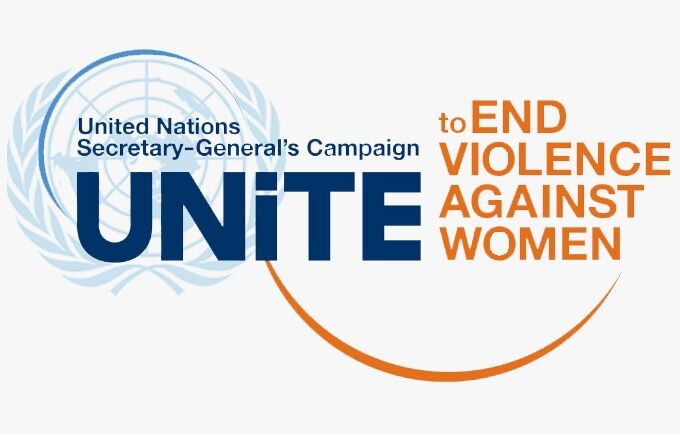Physical Violence
Physical abuse in a relationship often starts gradually, such as with a push or a slap, and then becomes progressively worse over time. Physical violence is always illegal.
In July, a survey by the Australian Institute of Criminology revealed almost 10% of Australian women in a relationship had experienced domestic violence during the coronavirus crisis.
If you have been physically abused, there are things you can do to get support.

Violence in the times of COVID-19
2020 has been a very difficult year. Starting off with bushfires in Australia, with only a small reprieve prior to the start of a pandemic unprecedented in size and scope, this year has seen challenges for everyone, in all areas of life.
Sadly, violence against women and girls continues, even in times of a pandemic. In fact, a lot of the data suggests that things are worse than ever before, worldwide.
Whilst it has been hard to obtain good data in terms of the rate of domestic violence, what we do know is that the pandemic has worsened the known risk factors for violence against women. Financial stress and job insecurity has led to an increase in vulnerability. Job loss in the informal sector has seen a subsequent increase in sexual exploitation in many low-paid female workers. Financial stress and lack of income has increased the risk of abuse within the home. Calls to police regarding domestic violence has increased significantly throughout the world – in China, in the early days of the pandemic, police contacts regarding domestic violence tripled. Being confined to the house is increasing stress and isolation, leaving women with no escape from abusive partners.
Not only have risk factors increased, but stay-at-home orders have increased the isolation of many victims of abuse. Often the workplace, or the school pickup line, or the classroom, are places where women can more safely put out distress signals to their coworkers, friends or teachers – this option is harder to take for many women who are working at home or educating their children at home. In many cases, access to health and legal services have become more difficult; women are finding it harder to find help should they need it. Many support services have found it harder to outreach to women in lockdowns, and some services have had to close down due to lack of funds or staff, leading to others being overwhelmed and running out of room for support.
Reproductive health has been an issue – for instance, initially abortion became quite difficult to access in Australia, with Tasmania losing its only local service, and borders closed, meaning for a period of time, it was impossible to access abortion services face-to-face in the whole of Tasmania. With the start of telehealth, this became easier, however telehealth is still not allowed for medical abortion in South Australia. There, one can only access an abortion if a physical service is available – which is difficult when you are in lockdown. Thankfully the SA lockdown was only brief, but this leaves a potential issue should there be another lockdown situation. Coupled with an increase in reproductive coercion occurring, this is a disaster for the bodily autonomy of many women.
COVID 19 has been terrible for everyone, but particularly terrible for women. 45 women this year have died at the hands of their intimate partner. That is nearly 2 women per week.
Types of physical abuse
-
Physical abuse can involve any of the following violent acts:
- scratching or biting
- pushing or shoving
- slapping
- kicking
- choking or strangling
- throwing things
- force feeding or denying you food
- using weapons or objects that could hurt you
- physically restraining you (such as pinning you against a wall, floor, bed, etc.)
- reckless driving
- other acts that hurt or threaten you.
Intimate partner violence is the third greatest health risk for women aged 25-44. It has many forms and can include emotional, social, religious, reproductive, financial, coercive, physical or sexual abuse.
There are things we can do to help prevent violence against women.
- We can challenge the societal ambivalence on violence against women
- We can challenge gender stereotypes and roles
- We can strengthen respectful and positive relationships between men and women
- We can increase women’s involvement in decision making and policy decisions.
- We can educate young men around what domestic violence is and how to treat women with respect
How to respond if you think someone is experiencing domestic violence:
- It is okay to something
- Make sure to maintain trust where it is safe to do so.
- Offer support but do not force a woman to act.
- Help her to access support if she asks for it. 1800respect.org.au is a good place to start.
- UN women report on violence against women and girls during COVID:
- https://www.unwomen.org/-/media/headquarters/attachments/sections/library/publications/2020/impact-of-covid-19-on-violence-against-women-and-girls-and-service-provision-en.pdf?la=en&vs=0
- Women’s Crisis Line (NSW): 1800 656 463
- Safe Steps Crisis Line (Vic): 1800 015 188
- Men’s Referral Service: 1300 766 491
- Lifeline (24-hour crisis line): 131 114
- Relationships Australia: 1300 364 277
